Kyodo News “JET Alumni” Series: Dominic Abordo (Akita)
News agency Kyodo News has recently been publishing monthly articles written by JET alumni who were appointed in rural areas of Japan, as part of promotion for the JET Programme. Below is the English version of the column from February 2014. Posted by Celine Castex (Chiba-ken, 2006-11), currently programme coordinator at CLAIR Tokyo.
********
Originally from San Francisco, CA, Dominic Abordo (Akita-ken, Kosaka-machi, 2008-11) holds a Bachelors Degree in English Literature with a minor in East Asian Languages from Berkeley University. He spent three years working as a Coordinator for International Relations (CIR) in rural Akita before enrolling in a Master’s degree in Social Work from Columbia University, NY. He currently works as a Freelance Consultant in Social Work in New York.
A “Big City Boy” in Snow Country
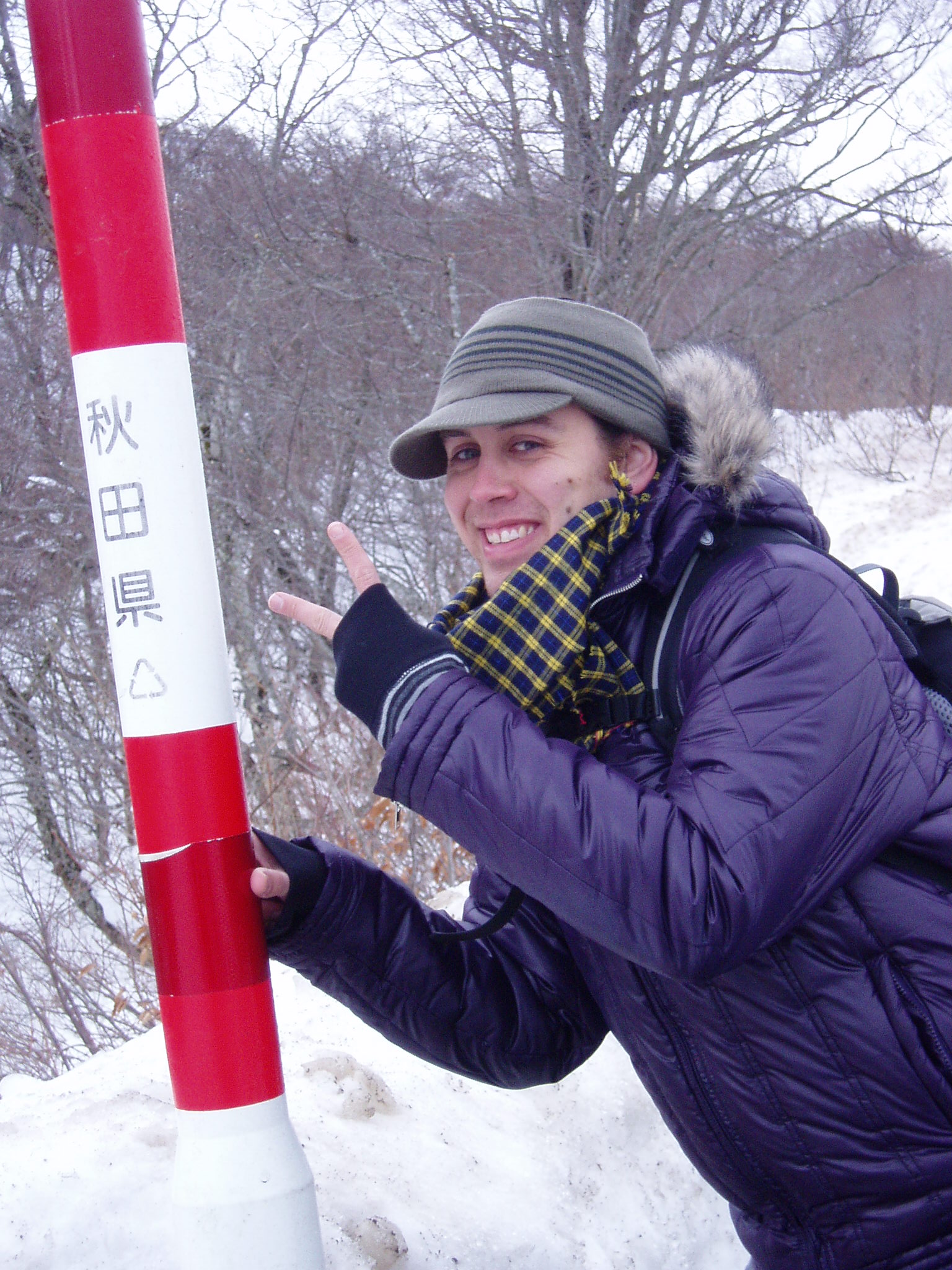
“The one thing that I will continue to share with my friends and family is that the people of the small town of Kosaka-machi have some of the biggest hearts in the world.”
Akita (əˈkiːtə), noun: 1. one of the northernmost prefectures on the Japanese island of Honshu; 2. the prefecture that I, Dominic Abordo, called “home” for three years.
If you ask the average American about Japan, it is highly unlikely that Akita Prefecture – a gem of the Tohoku Region famous for heavy snowfall, rice, kiritanpo, and sinister mountain demons called namahage – will be included in his or her response. Despite living in Japan for three years prior to the JET Programme, I, too, knew very little about my future home. Thus, I was admittedly nervous when I first arrived in Kosaka-machi, a small town of approximately 6,500 people located in the northeastern corner of Akita. I assumed that my time as a Coordinator for International Relations (CIR) would be full of new adventures, challenges, and opportunities, but I had no idea that the experience would have such a positive and lasting impact on my future.
Although it took almost one year to master the local dialect, Kosaka-machi soon became a second home to me. The natives were eager to introduce me to the natural beauty and hidden treasures of their hometown, including landmarks such as Nanataki Waterfall, Lake Towada, and the Korakukan kabuki theater. They often accompanied me to the best restaurants, bars, and izakaya in the area, sharing personal stories about their families, jobs, and travel experiences over a meal or a few drinks. Elementary school students and adults alike offered warm greetings when we ran into each other around town. Perhaps most importantly, they did everything they could to make sure that I was happy, healthy, and an active part of the community. Little did I know that my love for dance, music, and performing arts would enable me to form lasting connections with so many of them. Read More
Japan Times features JET alum Matthew Cook and his work with Osaka’s English Reformation Project Team
****************************
Very nice article on JET alum and former AJET Chair Matthew Cook (Osaka-fu, 2007-12) about his path from JET to becoming an agent of change for the Japanese English education system through is unique role with Osaka Prefecture’s Board of Education. Matt is also the founder of the Kansai JET Alumni group. FYI, you can also click here for a recent JQ profile of Matthew Cook by JETAA New South Wales‘ Eden Law (Fukushima-ken, 2010-11) .
Changing the system starts by challenging it
BY TERU CLAVEL
Just seven years after first participating in the JET program in Osaka, Matthew Cook from Danville, Virginia, is making great strides as a pioneer of English-language education reform in Japan. Having never previously been to an Asian country, Cook is now one of seven members of Osaka’s groundbreaking English Reformation Project Team, having been appointed by Osaka superintendent Toru Nakahara in 2013. With an unswerving commitment to English-language education and a little luck, Cook’s efforts may pave the path for Japan’s next generation of global leaders.
Cook applied to the JET (Japan Exchange and Teaching) program because it was “the most lucrative, stable and safe way to get to Japan.” Having run his own karate dojo in the United States, he felt the need to gain a deeper understanding of the Japanese culture behind it. However, Cook was waitlisted and needed to make a snap decision when he was offered a position within a month of the JET start date. “I had totally assumed that I wasn’t going to get in,” he says.
Cook’s initial placement was less than ideal, though. He was forewarned that the Osaka junior high school to which he was assigned might be challenging, but he was not prepared for the “few students who were stopping class altogether, violence in the classroom or kids getting up and leaving.” Read More
CLAIR Magazine “JET Plaza” Series: Caroline Klee (Kagawa)
Each month, current and former JET participants are featured in the “JET Plaza” section of the CLAIR Forum magazine. The April 2014 edition includes an article by JET alumnus Caroline Klee. Posted by Celine Castex (Chiba-ken, 2006-11), currently programme coordinator at CLAIR Tokyo.
***********
Born to a French father and a Japanese mother, Caroline Klee (Kagawa-ken, 2000-03) was raised in Tokyo until the age of 15 and considers herself an “Edo-ko” (Tokyo girl). After graduating from a business school and working several years in Paris, she decided that she wanted to go back to Japan to live and work there and joined the JET Programme as a CIR. She then moved to Vancouver to become an Activity Coordinator at an English language school, before coming back to Japan in 2008. She has been working in Tokyo ever since and is now Director for Domestic and International Events for a Healthcare Communication Agency. When she is not travelling around the world with her job, Caroline enjoys fishing in the open sea in the Tokyo Bay area, and cooking tasty meals for friends and family.
So much more than Udon…
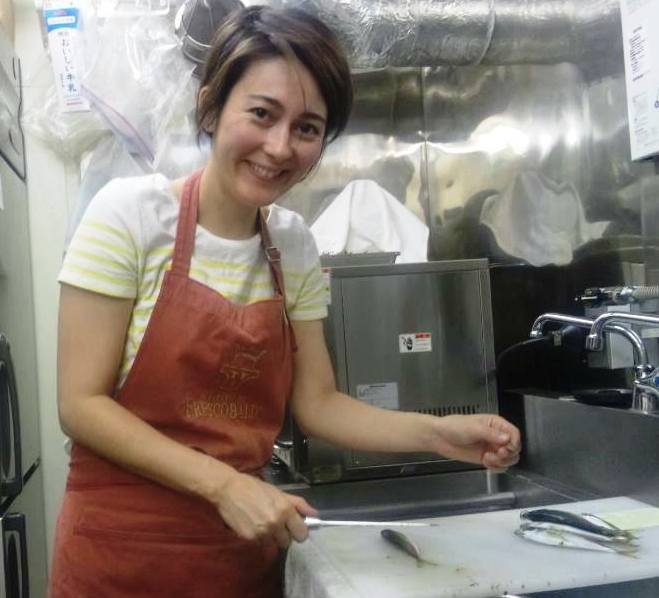
“My three years in Kagawa are my treasure, and I am filled with gratitude towards all the people I was able to meet there”
Everything started with an encounter. After leaving my job in Paris, I was living back with my mother in Strasbourg and was thinking
of working in Japan, where I used to live when I was a child. My mother came back one day from her interpreting job, saying “I met someone who is doing a job that would suit you perfectly.” Oh really?! She had met a Belgian CIR who was on a business trip in our town with a group of colleagues who were interested in the city tram system. So this is how I found out about the JET Programme. I applied and was lucky enough to be sent to Kagawa.
Where is it? I still remember the following phone conversation with my parents. After applying for JET I decided to travel to Tibet, and I was in Lhassa when my parents received a letter with information on my placement. First, my father told me on the phone “You are going to be placed in Kanagawa.” I heard a shuffle on the other side of the line as my mother grabbed the phone. “No, not at all. You are going to be placed in Ka-ga-wa, not in Kanagawa.” My first reaction was “What? But where is Kagawa?” And my mother answered without answering. “Oh, you will be fine. Udon is very good over there and you will be able to ride your bicycle around Takamatsu.” OK… Well, she was right. I did find a very unique udon culture in Kagawa and I also rode my bike every day to IPAL, the Kagawa International Exchange Center, where I worked. But I also ended up meeting many fantastic people and doing many incredible things. My three years in Kagawa brought me so much in terms of experience and joy: they are priceless. Read More
JET alum Harry Hill named Chairman of U.S. CULCON
 Here’s a link to the official post on the CULCON website: http://culcon.jusfc.gov/news/harry-hill-becomes-chairman-of-u-s-culcon
Here’s a link to the official post on the CULCON website: http://culcon.jusfc.gov/news/harry-hill-becomes-chairman-of-u-s-culcon
FEBRUARY 18, 2014
The Japan-U.S. Friendship Commission and the U.S. CULCON Panel are pleased to announce the appointment of a new Chairman, Mr. Harry A. Hill.
Mr. Hill, a native of New York City, has served as President and CEO of Oak Lawn Marketing, a branding and media company that owns Shop Japan, the largest infomercial brand in Japan, since 2006. He brings with him a wealth of experience related to educational and cultural exchange and entrepreneurship, having lived and worked in Japan for nearly thirty years. Mr. Hill served as a participant on the Japan Exchange and Teaching Programme and its precursor program, the Monbusho English Fellows from 1987-1990 in Gifu Prefecture, where he created a strong network of individuals and government officials who would later help him in building his professional career. His extensive professional experience includes founding H&R Consultants, a leading lease providing and relocation service in Tokyo and Nagoya. In addition, Mr. Hill has been actively involved in numerous charitable and non-profit organizations, including the U.S.-Japan Bridging Foundation, where he has been a member of the Tokyo Advisory Committee and long-time sponsor of its scholarship program. “Mr. Hill will be an asset to the Japan-U.S. Friendship Commission and CULCON, bringing strong leadership experience as a successful entrepreneur, and a deep passion for strengthening the U.S.-Japan relationship through educational and cultural exchange,” says Executive Director Paige Cottingham-Streater. Mr. Hill’s expertise on Japan and cross-cultural communication skills will further advance the Commission and CULCON’s efforts to invest in Japanese and American studies, people-to-people exchanges and artistic and cultural initiatives.
Mr. Hill succeeds Read More
CLAIR Magazine “JET Plaza” Series: Don Brown (Osaka)
Each month, current and former JET participants are featured in the “JET Plaza” section of the CLAIR Forum magazine. The March 2014 edition includes an article by JET alumnus Don Brown. Posted by Celine Castex (Chiba-ken, 2006-11), currently programme coordinator at CLAIR Tokyo.
***********
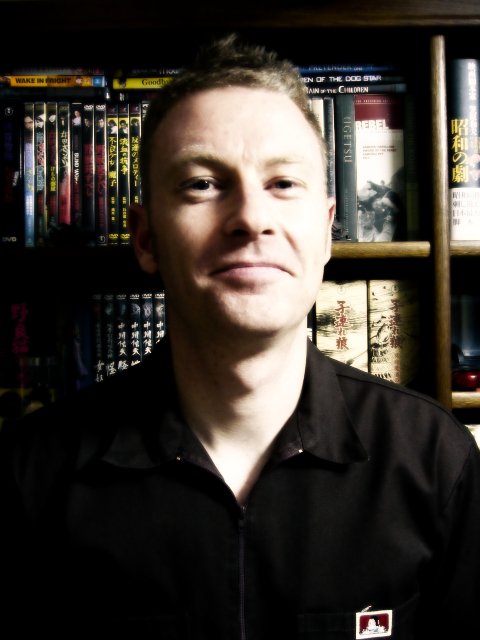
“I’ve been in Japan for 14 years now, but those first three in Kawachinagano were the most thrilling and character-building. Without them, I wouldn’t be where I am now, and thanks to JET, I’m now doing exactly what I always wanted to do.”
Originally from Auckland, New Zealand, Don Brown (Osaka-fu, Kawachinagano-shi, 1999-2002) majored in journalism and Japanese at university and worked in television before taking part in the JET Programme as a CIR. He subsequently remained in Japan and held several jobs including Public Affairs Officer at the New Zealand Embassy in Tokyo before becoming a freelance subtitler and translator specializing in Japanese film. In 2013, films for which he provided English subtitles were screened at the Cannes and Venice film festivals.
20/20 Hindsight
Somehow I doubt that I’m the only JET Programme participant who looks back on their time with regret. Now don’t get me wrong – this isn’t the beginning of some bitter diatribe. When I say regret, I mean along the lines of “I wish I’d spoken to that colleague more,” or “I wish I’d reacted differently in that situation,” or “I wish I’d done more in the time I had.” It wasn’t until my time on the Programme was up that I became fully aware of how lucky I’d been to have lived and worked in Kawachinagano.
No, you can’t ski there. Despite the “nagano” in the name, the city is located in the southeast of Osaka, on the border with Nara and Wakayama. Or as I liked to explain, the heel in Osaka’s boot. 70% of the city is forest (toothpicks and bamboo blinds are its major exports), and it even boasts mountains and a lake, but it’s only about a half-hour train journey away from downtown Namba. Try finding a place to live with those favorable specifications in Tokyo. I couldn’t.
The first time I stepped off the train at Kawachinagano Station on the Nankai Koya line, I instantly had a gut feeling that I was in the right place. My supervisor and a couple of other senior staff members from my division treated me to dinner at a conveyor belt sushi joint, made sure I had everything I needed at my apartment, and even helped me to acquire a bike. At the end of my bewildering first day at the office, the shy junior staff shuffled over to my desk in a tight formation and engaged me in conversation. Pretty soon, they were taking me out to massacre songs in two languages at karaoke and flail away in vain at lethal velocity baseballs at the batting center. Members of the international friendship association welcomed me into their homes and treated me like their long-lost son, only paler and frecklier.
Having never studied in Japan prior to JET, let alone translation and interpreting, being thrown into the deep end forced me to develop skills I still depend on today. It also dispelled all the preconceived notions about Japan and Japanese people that I’d accrued over the years from reading books and watching films back home, and gave me my first revelatory glimpses of what living and working in Japan was really like for flesh-and-blood Japanese people. As well as my colleagues in the cultural division and the international friendship association, my job brought me into contact with people from many and varied walks of life. Teachers and school children, sake brewers, calligraphers, firefighters and police officers, rice farmers, prefectural governors, World Cup organizers, and the diverse local foreign community. Coming from a wee island in Auckland’s Hauraki Gulf with a fluctuating population of only a few thousand, calling my time in Kawachinagano “eye opening” would do the place a gross disservice. “Mushroom-free consciousness expanding” is more like it. Read More
CLAIR Magazine “JET Plaza” series: Dr. Adam Komisarof (Saitama)
Each month, current and former JET participants are featured in the “JET Plaza” section of the CLAIR Forum magazine. The February 2014 edition includes an article by JET alumnus Dr. Adam Komisarof. Posted by Celine Castex (Chiba-ken, 2006-11), currently programme coordinator at CLAIR Tokyo.
***********
Adam Komisarof (Saitama-ken, 1990-92), PhD, is a professor in Reitaku University’s Department of Economics and Business Administration. In 2012-13, he served as a senior associate member of St. Antony’s College, Oxford University, and conducted research as a visiting academic at the Nissan Institute of Japanese Studies. As a bilingual intercultural trainer (Japanese and English), he has conducted workshops for thousands of participants in Japan, the United States, Southeast Asia, and Europe. Dr. Komisarof has over 40 publications and has authored two books, On the Front Lines of Forging a Global Society: Japanese and American Coworkers in Japan (2011) and At Home Abroad: Westerners’ Views of Themselves in Japan (2012).

“Overall, my life in Japan has been very satisfying, and if the JET Programme had not given me such a positive first experience here, I doubt that I ever would have settled in Japan and led the life I have. JET has opened my eyes to a new cultural, linguistic, and personal reality for which I am deeply grateful.”
A Life Trajectory Shaped by the JET Programme
My experience in the JET Programme made me who I am today—both as a professional and a human being. When I graduated from Brown University in 1990 and readied myself to journey to Japan, I never imagined that I would be still living here in my middle age, raising a family, and working as an academic who researches and teaches about how culture affects human experience, thought, and behavior. Yet here I am. Currently, I am a professor at Reitaku University, where I teach intercultural communication, English, and acculturation psychology. In my free time, I am also a corporate intercultural communication trainer and consultant. And with the exception of one year of my sabbatical at the University of Oxford, I have lived in Japan continuously since 1998 (in addition to two years on JET from 1990-1992).
So how did I get here? While at Brown, I studied education, so after graduation, I had two goals: to teach English and to do so in a culture that was completely different from my own. I spent the next two years working daily in the same high school in Saitama, a place which I called my “educational laboratory.” The English teachers encouraged me to design our lessons while giving advice and feedback. Consequently, I grew immensely as a teacher during those two years, as I could experiment with many educational philosophies and methods. I also developed close relationships with other teachers since they included me in many social events where we engaged in the revered Japanese custom of “nomunication.” Read More
Kyodo News “JET Alumni” Series: Laura Tasharofi (Kochi)
News agency Kyodo News has recently been publishing monthly articles written by JET alumni who were appointed in rural areas of Japan, as part of promotion for the JET Programme. Below is the English version of the column from January 2014. Posted by Celine Castex (Chiba-ken, 2006-11), currently programme coordinator at CLAIR Tokyo.
*********
Laura Tasharofi (Kochi-ken, Yusuhara-cho, 2004-07) hails from Gold Coast, Queensland, Australia. After a Bachelors Degree in Japanese Studies from Griffith University, Gold Coast, she joined the JET Programme and was placed as a CIR in a little Shikoku town where she spent the next three years. She currently works as the Student Loan Coordinator for Queensland TAFE and has been the President of JETAA Queensland since 2011.

“I always encourage young people I meet to consider the JET Programme as a life experience, and I am eternally grateful for the opportunities the JET Programme gave me.”
The Town Above the Clouds
Yusuhara: Town Above The Clouds (梼原町:雲の上の町). With a slogan like that, I suppose it should have been obvious, but as my supervisor drove me home from Kochi Ryoma Airport, I couldn’t believe how far we were climbing into the mountains. The deep green pine trees were towering over the winding road, and there were wisps of low cloud around us after the rain on that hot, humid day. The scenery was beautiful. Little did I know, I would spend the next three years becoming part of a wonderful community and making life-long friends.
Yusuhara had a population of a little over 4,000 people at that time. It is famous for being on the route that Sakamoto Ryoma took when he made his crusade to bring about the Meiji Restoration. You can follow the signs and walk the ‘Sakamoto Ryoma escape route’ (坂本竜馬 脱藩の道), through the hills to finish in Ehime-ken. It has a beautiful onsen and hotel, a pretty river and it is a short drive to the Tengu Highlands. Such a picturesque place, but there weren’t many tourists in those days. Some time after I left, NHK ran a TV series about the life of Sakamoto Ryoma, and that put Yusuhara on the map as a tourist destination for fans of the show.
In a small town like that, a tall Australian woman like me really stood out. People quickly came to recognise me. Everyone would say ‘good morning’, or ‘hello’ as I travelled to work or walked around town on the weekends. They knew where I lived and which car I drove. I very quickly learned that everyone knew where I was and what I was doing at any given time. At first I felt like I had lost my privacy, but I soon felt very safe and comfortable living in a small, friendly community where everyone knows each other.
I was quite busy as a CIR. I spent a lot of time visiting schools to do cultural and English lessons with kids from kindergarten up to Junior High School. I taught the kids how to play cricket, how to make rocky road (chocolate filled with marshmallows, nuts and cherries), I arranged a letter and Christmas card exchange between some of the students in Yusuhara and students at the school where my mum works in Tasmania. I assisted with the annual overseas study trip for 10 students from our town to our sister school in Queensland. I helped out at town events like the marathon and the kagura taikai (神楽大会). Read More
CLAIR magazine “JET Plaza” series: Philippe Arseneau (Miyagi)
Each month, current and former JET participants are featured in the “JET Plaza” section of the CLAIR Forum magazine. The January 2014 edition includes an article by JET alumnus Philippe Arseneau. Posted by Celine Castex (Chiba-ken, 2006-11), currently programme coordinator at CLAIR Tokyo.
***********
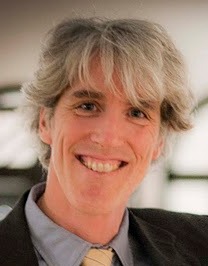
“In my experience, four factors made a difference in this awkward transition from Japan to Canada, from classroom to career, especially with regards to landing and holding a rewarding job: building a professional network; showing initiative; getting involved; and tailoring one’s job to one’s background and interests.”
Philippe Arseneau (Miyagi-ken, 1991-94) is from the Canadian Province of Québec and grew up in Montréal, the world’s second largest French-speaking city. Drawn to Japanese martial arts in his early age, Philippe developed an academic interest for Japan’s economic prowess while studying Labor Relations at the University of Montréal in the late 1980s. Changing his line of study to Anthropology, he specialized on Asian cultures and graduated with a Master’s degree after writing a thesis on “The Emergence of Initiation Rituals in Large Japanese Firms”. The JET Programme came as a fitting opportunity to deepen his understanding of Japan, and in the summer 1991 he was sent to Miyagi Prefecture where he taught English for the first year in the rural community of Tajiri, the second in Sendai, and the third in Natori. Soon after returning to Montréal, he worked as a sales representative for Japan Airlines until 2013. He now is a Japan lecturer at the University of Sherbrooke.
From Classroom to Career
Having graduated from the JET Programme nearly 20 years ago, I was asked earlier this year to deliver a keynote speech before representatives of the Canadian JETAA on the transition, difficult for some, from Japanese classroom to career at home. This paper is a concise version of it.
First, here is some background: I am a Montreal-born Canadian, raised in French, who learned English at school but more intensely through a series of summer jobs as a river guide in Ontario where I met my wife. And a couple of bilingual kids later, I am now pushing 50. I hold a MSc in Cultural Anthropology, with a focus on Japan. Admittedly not a market-oriented diploma. Weeks after submitting my final thesis in late spring 1991, I left to work as an ALT (AET back then) in Miyagi Prefecture where I would stay three years. A new Emperor had been anointed two years earlier. The economic bubble was starting to deflate. Japan banks were still the wealthiest on earth, the nation’s gigantic trade surplus fueled anger abroad and had caused an image problem for years, to which the JET Programme was allegedly meant to provide a partial solution by exposing western graduates to its culture in the hopes they would eventually go home to spread the gospel of a new and open Japan.
Like most ALTs, I taught English, but occasionally French. I also edited a JET prefectural newsletter called “The Miyagi Drum”. Nurturing post-graduates dreams, I spout on a new Japan cultural thesis and applied for doctoral studies at various universities around the world, expecting a grant or some kind of academic interest. Unfortunately, I never got to see the project through because of a career choice. And that brings me to the main topic of this article: professional life after JET. No doubt, the JET Programme can contribute to shaping one’s career as it did mine, though it offers less to those whose professional ambition lies outside the business of education– which was back then and perhaps still today the case with most ALTs. For want of providing highly transferable work skills, the JET experience managed at least to arouse curiosity among potential Canadian employers, but did not clinch me a job in and of itself. In my experience, four factors made a difference in this awkward transition from Japan to Canada, from classroom to career, especially with regards to landing and holding a rewarding job: building a professional network; showing initiative; getting involved; and tailoring one’s job to one’s background and interests.
Life As and After JET: Building Bridges
Recently posted on JETAA NSW site by Eden Law (Fukushima-ken, 2010-11):
The JET Programme has lead to many opportunities and careers, sometimes rather unexpectedly. Our Life After JET articles by former JETs gives an insight about their lives after the programme, and how it has shaped their careers and paths. We hope that it will prove useful as an insight for potential applicants into what we as ex-JETs got from our experience, and maybe provide some nostalgic memories for others. Please feel free to contact us if you want to write about your own experience!
Nathan Poore was an Oita CIR from 2004 – 2007, after which he used his JET experience working as an Events Coordinator and Translator for Waseda University in Tokyo until returning to Australia in 2010. He gives us a fascinating insight into what CIR does, as opposed to the life of an ALT.
In July this year, it will be ten years since I first arrived in Japan as a participant on the JET Programme. Looking back at my JET experience, my fondest memories are of the wonderful people that I had the pleasure of meeting and getting to know personally during my placement. Apart from being an unforgettable experience on a personal level, JET also became a fantastic professional opportunity. I learnt and developed a wide range of transferrable skills, even though I often did not realise this at the time.
As an undergraduate student, early on I had decided that I wanted to apply to the JET Programme. The grassroots exchange opportunity on offer to live and work in Japan, whilst utilising and improving my Japanese language skills was exactly what I wanted to do after graduation. A number of friends had also successfully participated in the programme, and highly recommended the experience. With the support and encouragement of my Japanese lecturers, I submitted my application. After an interview, I was fortunate to be accepted to the programme in the role of Coordinator for International Relations (CIR). My placement was in a small town called Ume*, located deep in the mountains of southern Oita Prefecture, Kyushu.
I arrived in Japan in July of 2004. My new supervisor and a few other colleagues made the two hour journey north from Ume to greet me at Oita Airport. Nearly ten years later, I still remember how friendly and welcoming my new colleagues were at the airport that day. I soon realised this sense of openness and warm hospitality were characteristics shared throughout the town. I spent the first few nights in Ume with my supervisor and his lovely family. It was summer, and those first days were spent in a haze of introductions to colleagues and neighbours, trying out the delicious local cuisine and attempts at getting used to the southern Oita dialect. I remember feeling at the time that my textbook Japanese was too formal, and I was eager to learn as much of the local language as possible.
My role as a CIR was to facilitate grassroots cross-cultural exchange activities in my area. In reality, this meant organising cultural events for the local community, visiting schools and other facilities, attending local events and basically getting out amongst the community and interacting with as many people as possible. Working together with my Japanese colleagues and other CIRs placed nearby, I planned various cultural events from proposal stage to running the event on the day. This involved gaining the support of my direct supervisor and section chief for each project, starting with a written proposal. With often limited or no budget allocated for these kinds of activities, it was important for me to consider the resources already available to receive the green light. I had many ideas (not all of them practicable) and after each project I sought feedback to try and make the next one more successful. During my time as a CIR, some of my particularly memorable events and activities included teaching Australian-style bush dancing to senior citizens, accompanying a group of locals on an official trip to Queensland as an interpreter, and publishing a commemorative collection of essays from all of the previous CIRs placed in Ume, to name a few. I could not have achieved what I did without the support and guidance of those around me, both inside and outside of the office.
My local CIR network was an incredibly diverse, talented group of people from across the globe, always happy to offer their support and share their skills and expertise. As many JET participants will have experienced, my role as a CIR extended further than the usual nine to five. Whether I was buying groceries at the supermarket or attending a local festival, I was always meeting new people and having conversations about life in Australia and Ume. These kinds of interactions were some of the most enjoyable and memorable for me personally. After living in Ume for three years, I was fortunate to have made many close friends, and feel truly grateful for the kindness extended to me. On a professional level, participating in the JET Programme taught me to be flexible in my thinking, and how to communicate and work successfully with different kinds of people. I learnt how to be resourceful, resilient, and proactive in order to achieve my work goals. I improved both my written and spoken business Japanese, in addition to public speaking in both English and Japanese. I gained experience in event planning, translation and interpreting, and teaching children and adults. These types of skills and experiences that JET participants gain are highly transferable across various roles, and personally speaking I have greatly benefited from my JET experience in my professional life since completing the program.
For new JET participants, I highly recommend getting involved with your local community as much as possible to make the most of your experience. For those who are returning home, I encourage you to stay in touch with your friends and colleagues from Japan, and get involved with your local JET alumni chapter, which is a great way to network and maintain your connection with Japan.
*Ume amalgamated with Saiki City in March of 2005, together with seven other nearby towns and villages.
Let’s Talk Japan Podcast, Episode 19 – Japanese Translation & Interpretation
Let’s Talk Japan is a monthly, interview format podcast covering a wide range of Japan-related topics. Host Nick Harling (Mie-ken, 2001-03) lived in Japan from 2001 until 2005, including two great years as a JET Program participant in Mie-Ken. He practices law in Washington, D.C., and lives with his wife who patiently listens to him talk about Japan . . . a lot.
In this episode, Nick speaks with Stacy Smith about the joys and challenges of working as a professional Japanese translator and interpreter. Stacy worked as a Coordinator of International Relations (CIR) for the Japan Exchange Teaching (JET) Program in Kumamoto prefecture before eventually returning to the United States and turning her love of Japanese into a career. When not on the road with work, Stacy lives in New York City.
Together they discuss how Stacy became interested in the Japanese language; how she went about deciding to become a professional translator & interpreter; the impact of technology; and tips for improving your own Japanese study habits
To learn more about Stacy, check out her website as well as her blog posts for JETwit. Also, here’s a great article about Japanese translation and interpretation.
If you have not already done so, be sure to “Like” the podcast on Facebook, and follow the podcast on Twitter @letstalkjapan. Additionally, please consider leaving a positive rating and/or review in iTunes.
Kyodo News “JET Alumni” series: Jenson Deokiesingh (Toyama)
News agency Kyodo News has recently been publishing monthly articles written by JET alumni who were appointed in rural areas of Japan, as part of promotion for the JET Programme. Below is the English version of the column from December 2013. Posted by Celine Castex (Chiba-ken, 2006-11), currently programme coordinator at CLAIR Tokyo.
*********
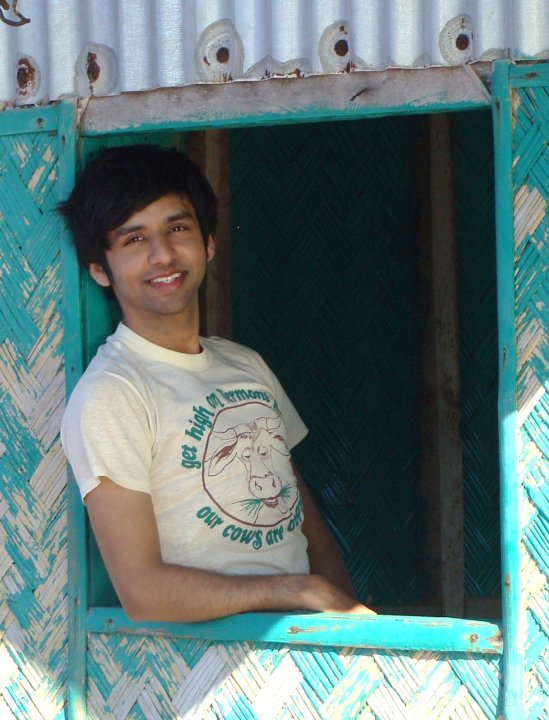
I am reminded that my love story was very much a mutual one and I fondly think, “In life we meet, only to part, so we can meet again.”
Untitled
I have always loved Yayoi Kusama. There’s an unexplainable magic and unorthodox beauty about her signature polka dot patterns. I had seen compelling images of her kaleidoscopic, “Love is Calling,” installation designed specifically for the Mori Art Museum’s 10th Anniversary Exhibition and immediately knew I had to see it.
On September 1st, my last day in Japan and ironically the last day of the “All You Need Is Love” exhibition, I went searching for Kusama to bid her a final farewell.
As I meandered from one provocative exhibit to another, I found myself riveted to the entrance of the section, “Losing Love”. Written on the stark white wall, in simple black text, were the words: Great love stories are often about the encounter with and subsequent loss of loved ones. I stood there, in a trance, repeating these words, over and over, until they became deeply etched in my memory.
A film of tear glazed my dark brown eyes; wedged in my throat was a painful lump; and my heart slowly crumbled with each excruciating beat it gave. The inevitable truth I was desperately trying to avoid was now blinding me in a sobering reality. My life as a JET, my Japanese love story, was irrefutably over.
On Friday, October 18th, I had my first job interview since returning to my vibrant and colourful country of Trinidad and Tobago. Truthfully, the interview was going terribly. A frightening combination of nerves and adrenaline had left me uncharacteristically inarticulate. I was about to cite it as one for the history books, when the interviewer inquisitively said, “Please tell me about your experience on the JET Programme.”
That one sentence was all I needed to give me the confidence I had momentarily lost. With an inescapable smile imprinted on my face, I gleefully declared that living and working in Japan have been incontrovertibly the best experience of my life thus far. And, it truly was.
My first years in Toyama are as vivid and clear as Toyama’s spring mountain waters. The hot embarrassment pulsating through my body as I wished the staff after a long day’s work “Gochisousama deshita (Thank you for the feast)” instead of the customary “Otsukaresama deshita (Thank you for your hard work)” still turns my brown cheeks rouge. Excitedly waking up early in the morning for my first school photo, wearing my best suit, whistling as I biked to work, and then having a crow defecate on my new suit still brings me uncontrollable laughter. Taking a lunch break at the school’s garden, reading Haruki Murakami’s “Sputnik Sweetheart” and then being stung by a several caterpillars still gives me chills. However, crazily running into the staff room, shouting, “Itai! Abunai! Itai! (Pain! Dangerous! Pain!)”, and having my vice principal heroically take the school’s vacuum to vacuum my back change those shudders into immeasurable smiles. Read More
Kitcher’s Café #003: Making the Most of Your Network
Kitcher’s Café, a new series by Lana Kitcher (Yamanashi-ken, 2010-12) is an assortment of articles, topics and commentary written for the JET Alumni community. Lana currently serves as the Business Development Associate at Bridges to Japan, a New York-based cross-cultural consulting firm founded by JET alum Jennifer Jakubowski (Hokkaido, 1995-97).
Dear recent JET returnees and current “job hunters,”
 I was given the opportunity to speak at the JETAANY Career Forum in New York City a few weeks ago. Approximately 25 recent returnees (plus JET alumni going through a career transition) attended the event and were able to learn from the presenters, and also from one another, about how to successfully land a job in today’s economy. We learned that it is important to keep strategies current as technology continues to change and as the methods of yesterday are not necessarily effective for our search today.
I was given the opportunity to speak at the JETAANY Career Forum in New York City a few weeks ago. Approximately 25 recent returnees (plus JET alumni going through a career transition) attended the event and were able to learn from the presenters, and also from one another, about how to successfully land a job in today’s economy. We learned that it is important to keep strategies current as technology continues to change and as the methods of yesterday are not necessarily effective for our search today.
I would like to share with you some of the points from my presentation called “Making the Most of Your Network,” in case some of you are also going through this transition now. When I first returned home from the JET Program I had a really difficult time figuring out how to start the job search. At that point my only full-time job had been teaching English in Japan, and I didn’t know how to start looking for a new job from scratch. It took me until mid February to get a job, and I really wish someone had told me what I needed to hear earlier.
Kyodo News “Rural JET alumni” series: Elizabeth Gordon (Iwate)
News agency Kyodo News has recently been publishing monthly articles written by JET alumni who were appointed in rural areas of Japan, as part of promotion for the JET Programme. Below is the English version of the column from November 2013. Posted by Celine Castex (Chiba-ken, 2006-11), currently programme coordinator at CLAIR Tokyo.
*********
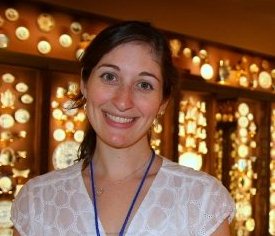
“I discovered through these exchanges that the people with whom I was talking wanted to know as much about me, about Chicago and about America as I wanted to know about them, Iwate and Japan. Through these interactions over the course of two years I began to gain a small understanding of the subtle nuances that were part of the culture in which I was living.”
Originally from Chicago, Elizabeth Gordon (Iwate-ken, Ninohe-shi, 2003-05) holds a Bachelors Degree in Psychology with a minor in Japanese Studies from Northwestern University, IL, and a Master’s degree in East Asian Studies from Columbia University, NY. She spent two years teaching English in rural Iwate before joining the Japan Foundation in New York as a Program Officer. She currently works as the Director of Private Events of the Adler Planetarium in Chicago.
Soba Diplomacy
Noodle making is an art, not to be taken lightly. Only a true master can produce the perfect noodle. After the wooden board is cleaned, the ingredients are kneaded in perfect rhythm until the correct consistency is achieved, and only the master knows for sure when that is. The rolling pin goes back and forth in a circular motion but forms a perfect rectangle, which is folded in half, then in half again, and in half again. Ever so delicately, the master cuts, slice after slice, all exactly the same width. They are cooked for just the right amount of time and then served with a simple dipping sauce sprinkled with scallions. The movements were ingrained in his muscles. I imagine he could have completed the whole process with his eyes closed. There is simplicity in the process, but the flavor is layered and complex.
When I arrived in Ninohe City, Iwate Prefecture in the summer of 2003 as a participant on the JET Program, I did not know a soul, nor had I ever heard of Iwate Prefecture. There was a short orientation in Tokyo, followed by a shorter orientation in Iwate’s capital city of Morioka. It was on the final day of orientation in Morioka that I met my supervisor, Mr. Sato. He picked me up and we drove the one and a half hours through the countryside back to Ninohe City. Mr. Sato did not speak much English and his heavy Iwate dialect was difficult for me to understand. We did, however, find common ground in a little bit of sports but mostly through food. I listed all of my favorite Japanese dishes, and he loved the fact that I could eat with chopsticks. He brought me to the Board of Education office and showed me my desk, which would be my home base for the next two years.
There was no rest for the weary, however. Before I could sit down I was whisked away on a driving tour of the entire city. We stopped at my two junior high schools and one of the eight elementary schools at which I would be teaching. I was asked to give a short self-introduction at each location. We also stopped at city hall to meet the mayor, and at the bank to open an account. Back at the board of education it was suggested that I be taken to the grocery store before I was dropped off at home for the evening. Read More
Kyodo News “Rural JET alumni” series: Nic Klar (Niigata)
News agency Kyodo News has recently been publishing monthly articles written by JET alumni who were appointed in rural areas of Japan, as part of promotion for the JET Programme. Below is the English version of the column from October 2013. Posted by Celine Castex (Chiba-ken, 2006-11), currently programme coordinator at CLAIR Tokyo.
********
Originally from Australia, Nicholas Klar (Niigata-ken, Itoigawa-shi, 1995-97) wrote the book “My Mother is a Tractor” about his life as an ALT in Omi, Itoigawa, Niigata-ken. After JET he worked for many years as a college counsellor and History teacher in international schools before returning to Japan to live. He now runs a small business in the Japan Alps, “Explore the Heart of Japan” as well as a popular travel website (http://myoko-nagano.com).
Remember that here all is enchantment, – that you have fallen under the spell of the dead, – that the lights and the colours and the voices must fade away at last into emptiness and silence. –Lafcadio Hearn
It was a stark winter’s day as usual in Niigata-ken, grey like sodden blanket. Not one that I had set out on seeking ghosts, but it suited the mood. As I changed trains in Naoetsu for Ōmi the old tempura stand I had been hoping for a snack at was still there, but today it was closed. It seems even the sturdy yukiguni could not stand the sort of weather that was being hurled at them this winter from across the Japan Sea. I settled into my seat, its soft orange covers familiar like an old friend, and waited for the delayed departure. I scrubbed the mist from the brown streaked windows with my hand as the motor idled and the minutes slipped by. Outside schoolboys in their traditional Prussian kit seem oblivious to the biting gusts of artic-like snow. Eventually with the sound of the station attendants whistle the doors snapped shut and the blue and white carriage groaned away from the platform.
As we crossed over the dark frigid waters of the Himegawa almost an hour later I grew excited. I hadn’t been back to the haunts of my old town for years. It was an unplanned visit and no-one really knew I was coming. I looked over for the local chugakko as the train passed by, obscured now by the construction of the new Hokuriku shinkansen. Framed behind those were the mountains I had loved so much. So many times I had taken my bike up into those North Alps making new discoveries, getting lost in the awesome beauty of its nature. Days of sunshine, days of rain. How I missed them. And the ghosts that inhabited them.
To the right there was a slight glimpse of my former apartment block. Not mine anymore, not for many years. In fact I think it now lays empty, apart from maybe a ghost or two, as the town depopulates. Tall, grey, forbidding – once referred to by a friend as, “…classic 1950’s communist Romanian style architecture”. The memory of that remark brought a brief smile to my face. Yet, it is the only place I will ever live in that has a sea view at the front and the mountains at the back. Grand views of God’s great vista on tap.
When the doors clunked open at Ōmi eki it was if nothing had changed. The chimes rang the same they had all those years ago and the black asphalt platform lay several centimetres thick with windswept snow. It felt soft under my feet as I began my ascent up the cold cement stairs. Standing in his post was my first metaphorical ghost – Watanabe-san the station master in the same blue-clad uniform, looking not a whit older than when we had last met a few years ago. He didn’t recognise me of course, even though I had taught his daughter at Ōmi chugakko. During my stay many of the station attendants had greeted me by name each time I passed through the gate. The inside of the station was a time capsule still painted the same green, apart from a more modern poster here and there, populated by even more ghosts of my memories. Local oba-chan in the waiting room still sat chatting on wooden bench seats around the kerosene heater behind glass doors. The three old shuttered-up ticket windows still existed – a sad reminder from the more grandiose boom days of Ōmi. Perhaps they were stubbornly retained in the forlorn hope that those times may yet return once again. Read More
CLAIR Magazine “JET Plaza” series: Anthony Bianchi (Aichi)
Each month, current and former JET participants are featured in the “JET Plaza” section of the CLAIR Forum magazine. The November 2013 edition includes an article by JET alumn Anthony Bianchi. Posted by Celine Castex (Chiba-ken, 2006-11), currently programme coordinator at CLAIR Tokyo.
********
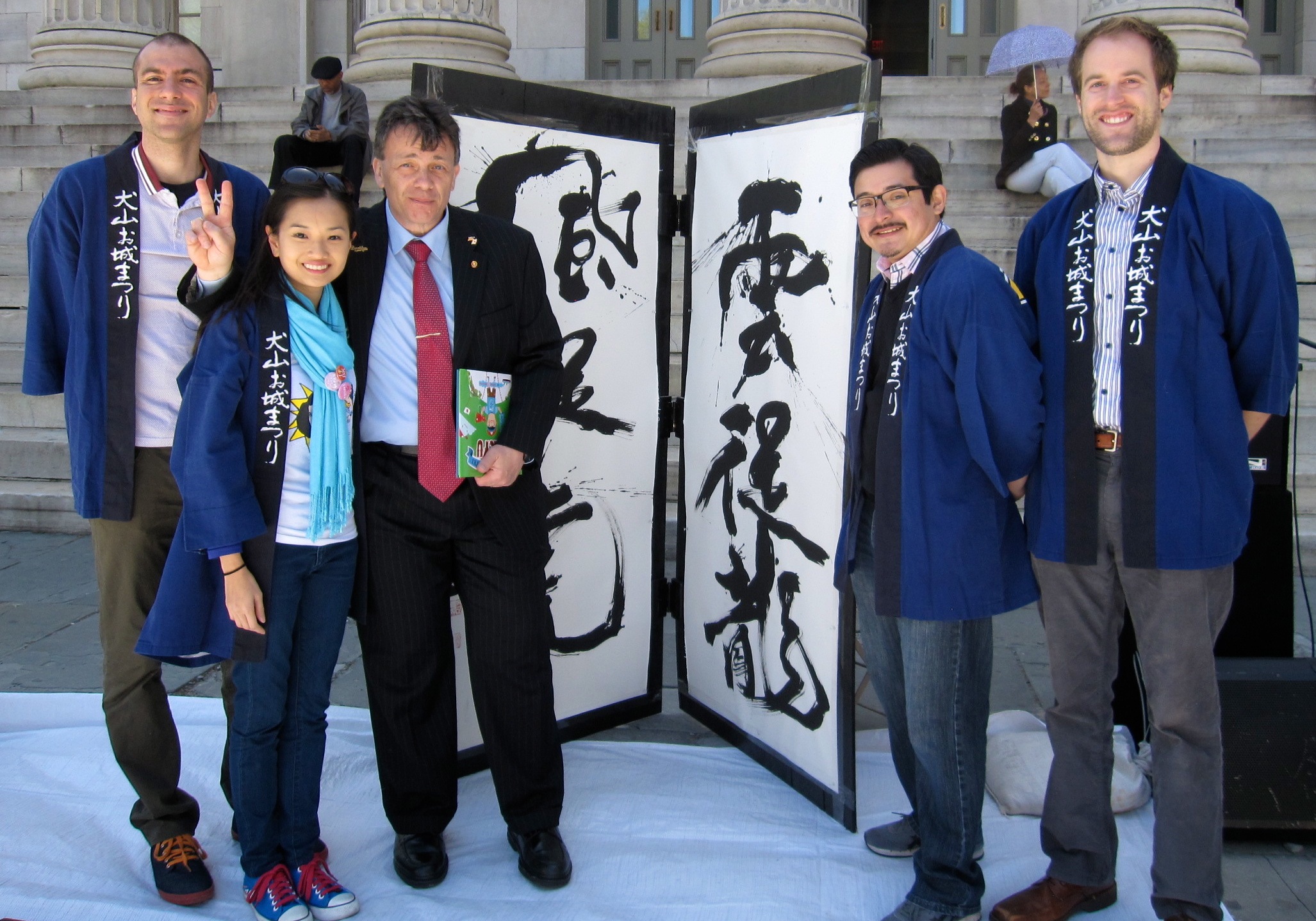
“Once you are in the programme, you are in the programme for life. As an Italian kid from the streets of Brooklyn, I get that. Like they say, when you’re a JET you’re a JET all the way, from your first cup of tea to your last hanami.”
A native of Brooklyn, New York, Anthony Bianchi (Aichi-ken, Kiyosu City, 1989-91), graduated from New York University with a degree in film making. After working on a number of television programs in Hollywood, he joined the JET Programme and spent two years working as an ALT in rural Aichi. A few years later, after overcoming many difficulties, he started the Native English Teacher (NET) Program, a teachers programme tailored for Inuyama City. Feeling there was a wall between the citizens and the city hall, he decided to run for the office and was voted into the city council of Inuyama City, Aichi Prefecture in April 2003. Anthony is currently serving his third term.
JET Generations
As anyone who has done so knows, living and working overseas in a different culture has a profound effect on all sides.
I have written before about how being on the JET Programme changed my life. To make a long story short, I would definitely not be here in Inuyama doing what I am doing had I not been involved in JET. Sometimes it still amazes me how things worked out. I mean, sometimes while I am making an argument on the council floor about some very local issue I still think, “How in the world did I end up here?” Conversely, I wonder at times what I would be doing if I had not joined JET some 25 years ago. Definitely something very different and most likely not as rewarding.
But the JET experience is certainly not only about what you get out of it, as I mentioned at the top, it is about the effect it has on all sides. As time passes I realize more and more that being a JET alumnus is a living thing that goes on after your contractual duties end. I still meet people involved with the programme that leads to great relationships and opportunities. Especially opportunities to give others even a small glimpse into another culture like the one we had by being part of the JET Programme. I am always impressed by the willingness of JET alumni to give back. A couple of summers ago I was asked to be on a panel at a national conference in Washington DC. Of course, there again, I met many outstanding alumni who are doing great things to promote cultural exchange and understanding between Japan and their home country. But I also realized that there is something about meeting former JET participants that has a camaraderie that is different and,in many ways, surpasses any other alumni association that I have known. I include in this group also Japanese staff and officials who have worked on the programme.
I would like to talk about a recent example. Out of my office, we run an exchange program called B. Bridges. We are a volunteer exchange group in our tenth year of existence. The idea for the group was seeded at an event the Brooklyn Borough President,Marty Markowitz, held for me at Borough Hall after my first election in 2003. There I was reacquainted with the administration of Xaverian High School. On that same trip I visited the school before returning to Japan. During that visit we decided to hold some kind of exchange.



